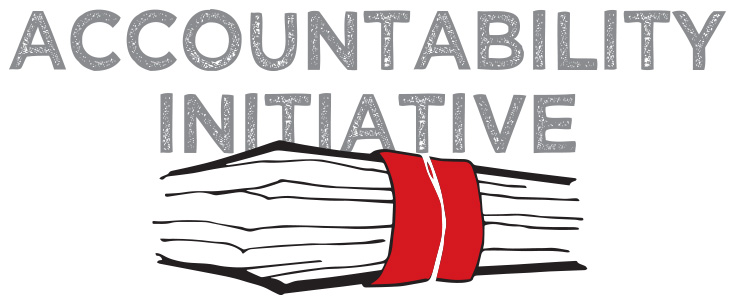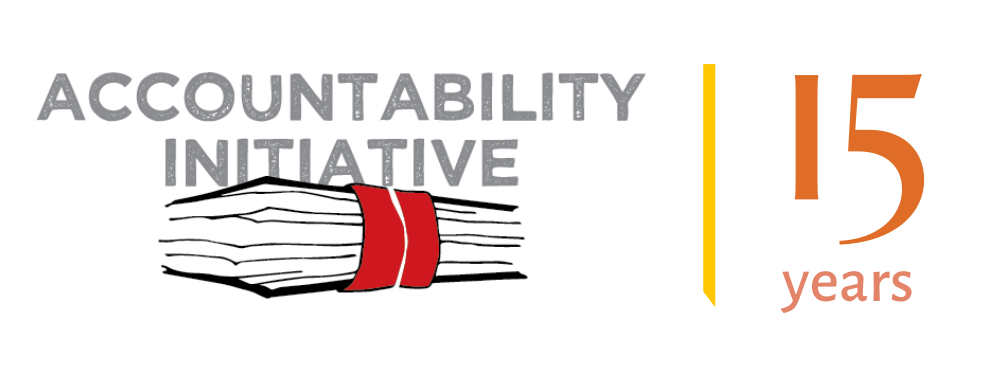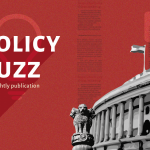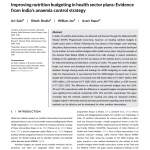
Money Laundering and the effectiveness of Anti Corruption Agencies- Part 1
2 July 2012
I recently read Jeffrey Robinson’s book “The Laundrymen”, an expose on the diversification of money laundering in the United States. This blog post, inspired by the book, collates my ideas on illicit money-flows –a theme I have been exploring since my previous blog post titled “White paper on black money”
What intrigued me most in this book was the fact that numerous agencies exist to combat this menace. Bringing this closer to home, developments in the Indian institutional framework to counter these flows present an interesting angle.
As you may already know, suspicious money trails, hoarding, and hidden agendas have defined the larger character of money laundering. In India, perceptions around money laundering are deeply (but not only) connected with ‘Hawala’ transactions. ‘Hawala’ is mainly associated with an alternate remittances system which ‘exists and operates outside of, or parallel to ‘traditional’ banking or financial channels’.[1] It is a fast transfer process which does not usually have a traceable paper trail- making it cumbersome for agencies to uncover., Robinson states that:
“Money laundering is called what it is because it perfectly describes what takes place – illegal, or dirty, money is put through a cycle of transactions, or washed, so that it comes out the other end as legal, or clean money. In other words, the source of illegally obtained funds is obscured through a succession of transfers and deals in order that those same funds can eventually be made to appear as legitimate income.”[2]
Adding to the problem of tracking these illicit flows is the endemic nature of corruption and the continuation of systemic failures within the Indian governance system. India, having recently become a member of the Financial Action Task Force (FATF) to combat money laundering and terror financing, is taking a keen interest in international as well as national level agency creation to support anti-laundering efforts.
When it comes to estimating the illicit money laundering money flows, there are various views and methods of calculations. In 2010, US-based Global Financial Integrity estimated that $462 billion went out of India between 1948 and 2008. Earlier this year, the CBI Director stated that Indians have ‘nearly Rs 24.5 lakh crore ($500 Billion) of illegal money stashed away in tax havens’[3][4] while another report claims that in 2009 $1500 billion was laundered by Indians (view report here). One of the key challenges while estimating the flow of illicit money is to effectively and promptly monitor transactions and thus, it is difficult to assess the accuracy of methods to calculate unaccounted money.
To combat money-laundering, India has come out with the Money Laundering Act (Amendment Bill) 2011, an amalgamation of various International Conventions that India has ratified (namely, UN’s Political Declaration and Global Programme of Action, Financial Action Task Force, Asia/Pacific Group on Money Laundering). It seeks to ‘enlarge the definition of the offence of money laundering to include therein activities like concealment, acquisition, possession, and use of proceeds of crime’ and also ‘link the provisions of Indian law with the laws of foreign countries and provide for transfer of the proceeds’. Banks have to record any transactions that are above 10 Lakhs and maintain these records for 10 years.[5]
The government has also formed several institutions to strengthen efforts against money laundering and other economic offenses. The table below lists a few of these bodies (you can click on the organization to be directed to their website), when they were formed, who they report to and what they aim to accomplish:
| Body | Formed | Reports to | Aim |
| Enforcement Directorate | 2000 | Ministry of Finance |
|
| Financial Intelligence Unit | 2004 | Economic Intelligence Council, Department of Revenue, Ministry of Finance |
|
| Central Economic Intelligence Bureau | 1985 | Department of Revenue, Ministry of Finance |
|
| Economic Intelligence Council | 1990 | Central Economic Intelligence Bureau, Chairperson is the Finance Minister |
|
| Serious Frauds Investigation Office | Ministry of Corporate Affairs |
|
|
| Central Bureau of Investigation- Economic Offences Wing | 1994 | Special Police Establishment |
|
With the establishment of several agencies as well as the introduction of a new foreign assets disclosure law (see here), the government does seem to be making some strides in the right direction- but how effective are these Anti-Corruption Agencies?
1. How independent is each agency in evaluating and assessing its cases?
2. Is the jurisdiction of a particular case already pre-decided? How many agencies does it really take to solve a case?
3. What is the judiciary’s role prior to and after the case is taken?
4. Is a single agency system the answer? Do too many agencies ruin the final assessment?
Without assessing these initial directions of thought, the road to tackling corruption will be a Sisyphean task. As I delve more into this topic, I hope to uncover a few answers (if not all).
Watch this space for Part 2!
[1] Interpol. ‘Hawala alternative remittance system and its role in money laundering. https://www.interpol.int/Public/FinancialCrime/MoneyLaundering/hawala/default.asp
[2] Robinson, Jeffery. “The Laundrymen: Inside Money Laundering, the World’s Third-Largest Business,” pg 4. Arcade Publishing, New York, 1996.
[3]Economic Times. http://articles.economictimes.indiatimes.com/2012-05-23/news/31827627_1_black-money-black-economy-nipfp
[4] Times of India.Black money Indians have stashed. http://timesofindia.indiatimes.com/india/Black-money-Indians-have-stashed-over-500bn-in-banks-abroad-says-CBI/articleshow/11871624.cms. Feb 12, 2012
[5] White Paper on Black Money. http://pib.nic.in/archieve/others/2012/may/d2012052101.pdf. May 2012,





